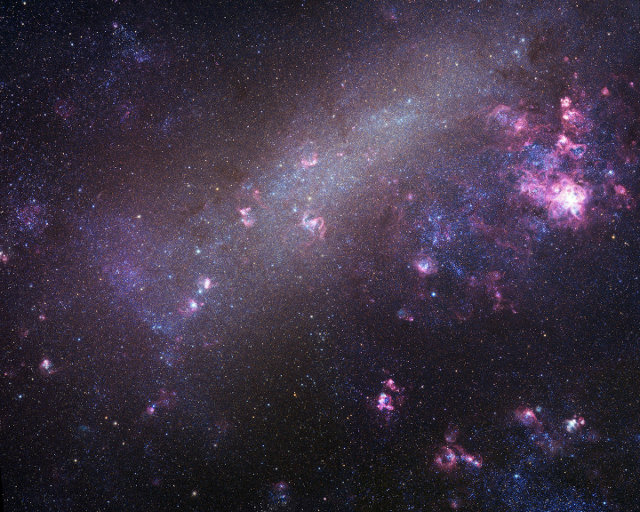Helium-burning binary stars give us a new tape measure for the Universe
Ars Technica » Scientific Method 2013-03-06

The measurement of cosmic distances is like a scaffold, where levels are built upon the structure below. To measure the distances to far galaxies, astronomers must calibrate their measurements using closer objects that we know the distance to; those in turn must be calibrated by closer objects still. As a result, if we are to trust the measurements we've made of the structure and expansion of the Universe, we'd better have really good measurements to nearby galaxies.
For that reason, astronomers have devoted a lot of effort to measuring the distance to the Milky Way's brightest satellite galaxy, Large Magellanic Cloud. Now G. Pietrzyński and colleagues have determined that galaxy's distance with unprecedented accuracy. By identifying a set of rare binary stars, their properties allowed the astronomers to measure their distances from Earth to 2.2 percent accuracy. These results will help refine the measurements on which cosmology is founded: the expansion rate of the Universe.
Distances within the Solar System can be measured a number of ways, including direct methods like radar ranging. With a truly accurate estimate of the size of Earth's orbit, astronomers can use parallax—the apparent displacement of stars in the sky as Earth orbits the Sun—to find the distances to stars in the Milky Way. Some stars are variable, changing brightness in a predictable way; these provide a means of measuring how far it is to neighboring galaxies.
Read 8 remaining paragraphs | Comments